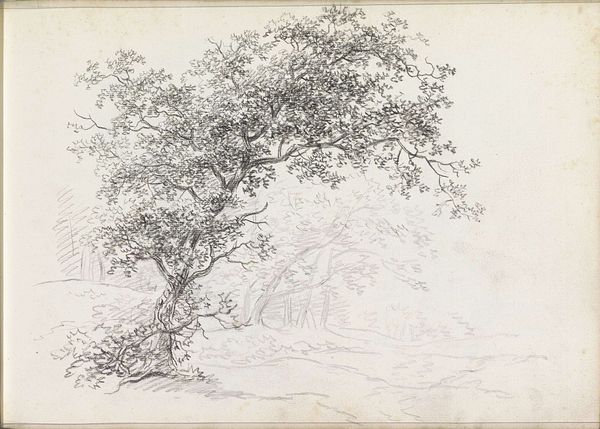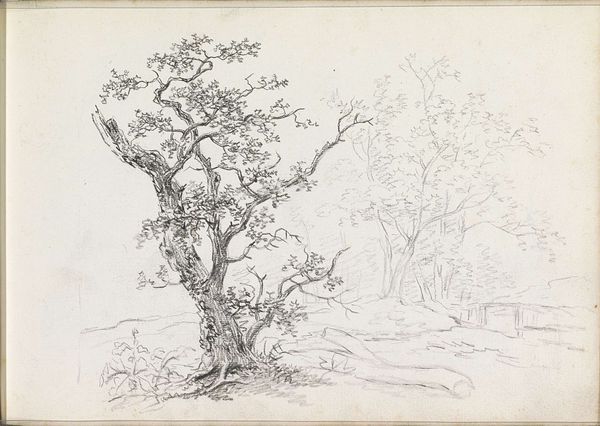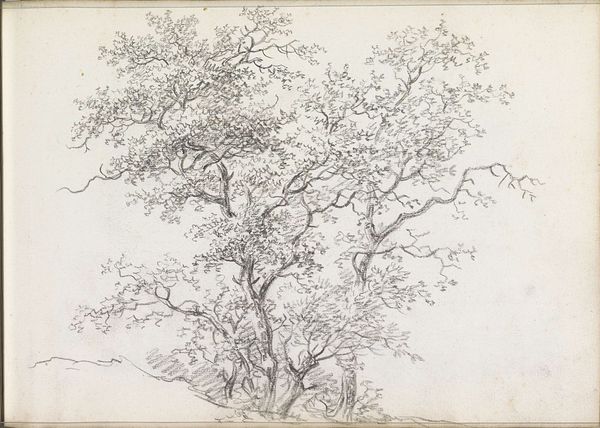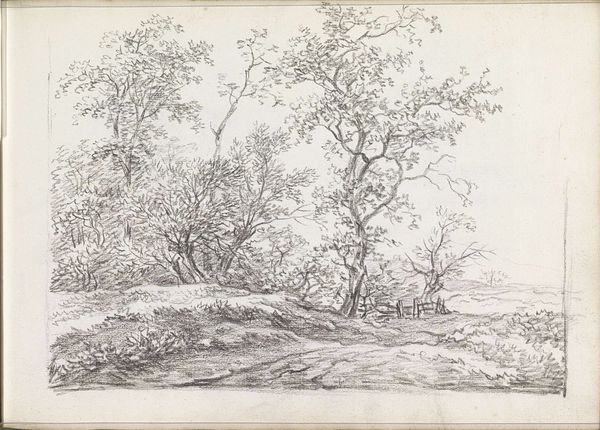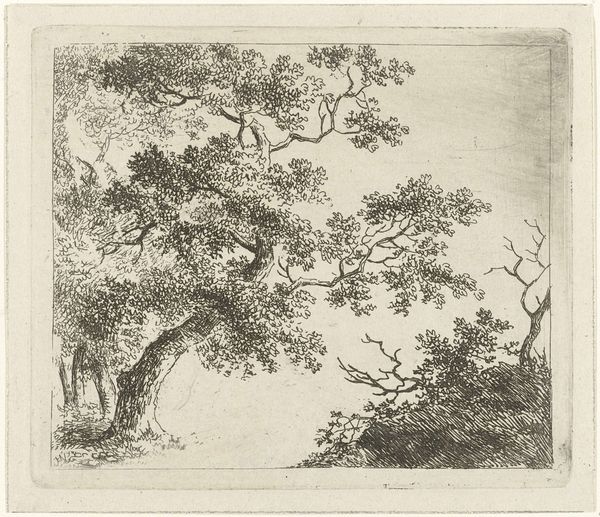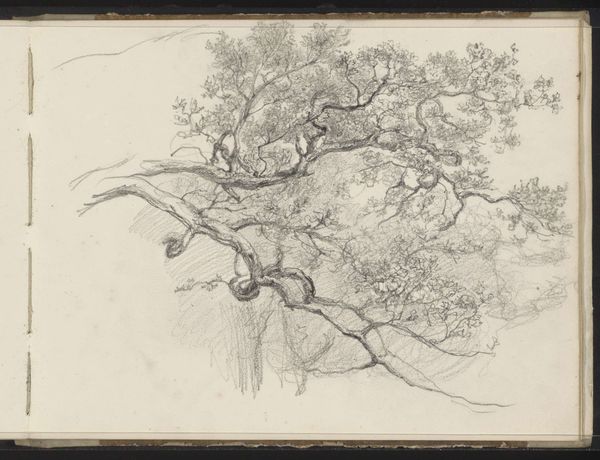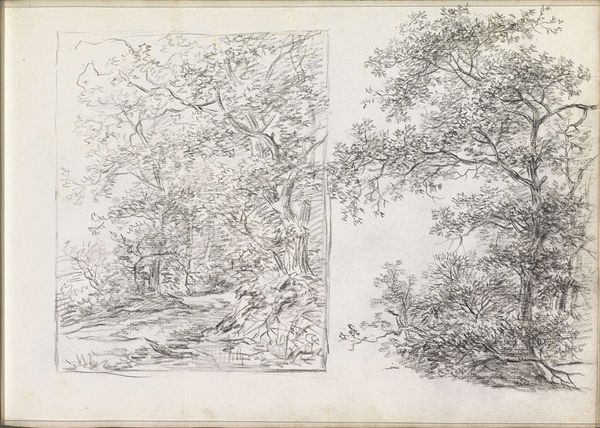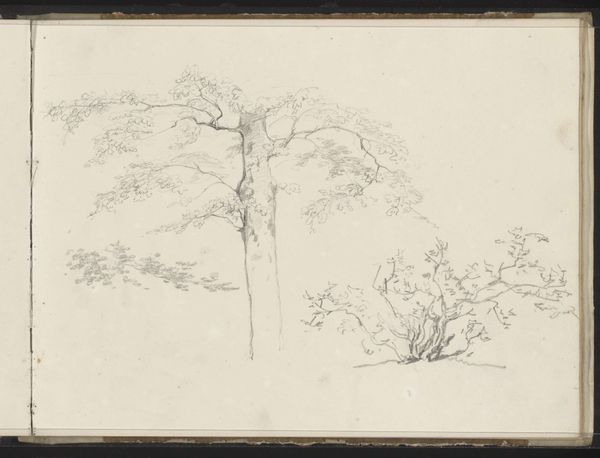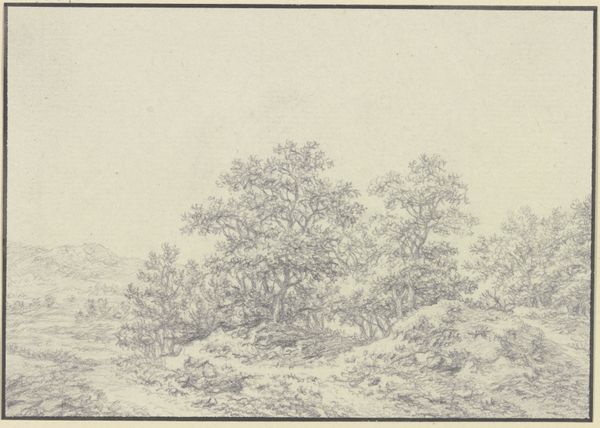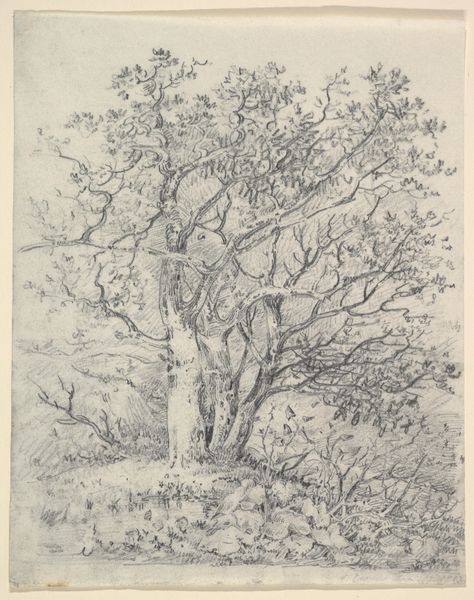
drawing, paper, pencil
#
drawing
#
landscape
#
paper
#
romanticism
#
pencil
#
northern-renaissance
#
realism
Copyright: Rijks Museum: Open Domain
Curator: This pencil drawing, made around 1811 by Andreas Schelfhout, is titled "Trunk, Roots, and Branches of a Tree" and resides here in the Rijksmuseum collection. Editor: My initial reaction is to the somber quality of the greyscale drawing. There's something so honest and direct about the textures of the tree bark rendered in pencil. Curator: Schelfhout’s interest in this artwork appears rooted in the physicality and detailed representation of nature. This contrasts sharply with idealized landscapes which, even in the romantic era, favored polished and picturesque settings. It almost reads as scientific. Editor: Right, and I think situating it within its historical context is vital, too. Remember that during the late 18th and early 19th centuries, nature—depicted as majestic, vast, and sublime—became strongly connected to nascent national identities. So this is both landscape *and* nation building. Curator: You're spot on. One might read these carefully studied trees as allegorical for Dutch resilience and perseverance given the social and political circumstances, given that it followed shortly after a period of French occupation. There's an almost stoic strength in the solid forms of these trees, depicted alone. Editor: Exactly, and notice too that we see them in an almost isolated way. The artist intentionally directs our gaze at these specific pieces of tree bark, these exposed roots. Were there other depictions of botanical studies from the time that served as models? Curator: Schelfhout undoubtedly engaged with traditions of naturalistic drawing dating back to the Renaissance but this drawing strikes me as less didactic and more observational. It could reflect changes in how the natural world was perceived as the field of biology began to mature. The pencil as a relatively inexpensive and easily transportable medium enabled a new level of direct interaction with nature. Editor: Thinking about its original display environment makes me consider who had access to such drawings? How was art serving the public at the time? What type of viewers might have interacted with drawings of this kind and how was it being taught in academic artistic circles at the time? Curator: Indeed, an exploration of its original use might expose connections between scientific pursuits, artistic education, and new ways of perceiving and representing nature within Dutch culture. Editor: Well, I find myself considering that an attention to those socio-historical forces are critical if we want to truly consider the art and life of that time.
Comments
No comments
Be the first to comment and join the conversation on the ultimate creative platform.
